Now that Mosul is back under coalition control, policymakers from D.C. to Baghdad must focus anew on building a lasting and durable peace in Iraq.
Fortunately, in the decade since the issue of post-conflict stability last took center stage, researchers have learned a great deal about why and how peace endures. As with any literature, the debates are not fully settled. But we nonetheless have a much clearer understanding of why some civil wars yield to lasting peace, while others beget further violence.
So what are the keys to a stable, post-conflict Iraq? Three findings in particular stand out.
Win Big
As study after study has shown, whether civil war recurs depends in part on how the war initially ends. Did the fighting stop after a clear victory for one side? Or did the guns instead fall silent because a peace deal was signed after a partial victory or stalemate?
Ironically, the surer path to peace is not actually a peace deal. It’s victory. As Anke Hoeffler and her colleague Richard Caplan have most recently shown, peace deals are far more likely to yield to further fighting down the road than military victories. In ceasefires and negotiated settlements both parties live to fight another day, but in a military victory only one does. As a result, of the 205 post-conflict cases that Collier and Caplan looked at, fighting typically resumed within 10 years in fewer than 25 percent of the cases ended by military victories, but in roughly 50 percent of those ended in peace deals.
For Iraq, the clear takeaway is thus to pursue a full military victory. For the country to enjoy a stable, long-term peace, the Iraqi coalition cannot just regain all Islamic State territory: its forces must destroy the Islamic State as an insurgent group too.
Yet if history is any guide, that task will be easier said than done. The graph below shows battle deaths from 2004 to 2013 between the Iraqi government and the Islamic State and its predecessor, al-Qaida in Iraq:

Note that even in 2012, when the conflict was at its ebb, the Islamic State’s insurgency still claimed the lives of 500 militants and soldiers.
For stable peace to take root, the Iraqi coalition will thus have its hands full. It cannot merely push the Islamic State out of its remaining territory—it will also have to prevent the Islamic State from reverting to its pre-war insurgency too.
Beware spoilers
Peace is difficult enough to sustain when there are only two parties. Add in more rebel groups, however, and it gets even harder.
Think of it as the conflict version of having too many cooks in the kitchen. The more rebels there are, the more difficult it is to get them all to agree on what the recipe for peace should be. Even worse, the more rebels there are, the more likely at least one will have incentive to play the spoiler—typically by targeting civilians as a way of eroding popular support for political compromise.
Two of the best new studies on post-conflict stabilization, by Sean Ziegler and by Peter Rudloff and Michael Findley, show that the effects of rebel competition are especially pernicious. When rebel groups split and compete with one another, they don’t just make it harder to end civil wars—they make it harder to keep the peace for years after the war finally ends. In one model, in fact, peace was over 50 percent more likely to break over 10 years when there had been multiple rebel groups than when there had only been one.
For Iraq, the implication is straightforward: The coalition should do all it can to avoid either splintering the Islamic State or giving rise to competing Sunni insurgents. Rather than trying to weaken the Islamic State by fracturing it—which Kathleen Cunningham has shown is a common tactic—the coalition should instead seek to keep the Islamic State unified.
Fortunately, this may actually prove feasible. Based on data from the Global Terrorism Dataset, Figure 2 below shows the number of distinct Sunni organizations in Iraq that carried out a significant attack in Iraq (i.e., one with 5 or more fatalities) in a given year:

As the figure illustrates, the Islamic State and its predecessor group, al-Qaida in Iraq, have proven remarkably adept at either coopting or driving out Sunni rivals. They did this first following the Iraqi insurgency of the mid-2000s, and then again soon after declaring a caliphate.
Although the resilience of the Islamic State will make full victory difficult, the fact that it has edged out its rivals is a boon. The Iraq coalition should now ensure that as they defeat the Islamic State, those prior networks don’t splinter off or re-emerge.
Be Inclusive
Not all peace deals are alike. Some are much more prone to fall apart than others. As Charles Call—a professor at American University and a nonresident senior fellow at Brookings—explains in his recent book, the peace deals that survive tend to share one thing in common: They’re inclusive. By contrast, peace settlements that exclude or marginalize opposition groups tend to break down.
Call’s work echoes other prior findings. In an early work on the issue, for instance, Caroline Hartzell and Matthew Hoddie looked at 38 civil wars that ended with peace agreements, and found that those with power-sharing institutions were much more likely to last. The more a rebel movement is incorporated into the political process, it turns out, the less incentive it will have to take up arms down the road.

Arguably the most compelling recent work on post-conflict stabilization builds on that logic. In “Why Bad Governance Leads to Repeat Civil War,” Barbara Walter looked at the effect of state institutions during civil wars on post-war violence. Does better, more inclusive governance lead to more lasting post-conflict peace? What Walter found was that while democracy itself is not associated with lower risk of recurring violence, aspects of it are. More specifically, countries with a commitment to rule of law and high political participation are significantly less likely to see armed conflict return. As Walter discovered, it’s not elections per se that appear to matter, but instead popular trust that the political process is in fact open.
For Iraq, the research has important implications. The government of Prime Minister Al-Abadi must seek out greater Sunni representation. Fortunately, Abadi has already made efforts to reverse the sectarian excesses of his predecessor, Nouri Al-Maliki, who unwisely consolidated power among Shiite elites. Yet as the Islamic State retreats and the Iraqi army extends further into Sunni strongholds, Abadi will have to do more than simply outperform Al-Maliki: He will have to find a way to bring as many Sunnis as possible back into the political process.
None of these tasks will be easy. Yet if Abadi and other Iraqi leaders want a stable future, the path forward is clear: Dismantle the Islamic State’s capacity and reach, and bring Iraqi Sunnis back into the fold before new spoilers emerge.
Anything less, and Iraq’s longstanding violence will almost certainly continue apace.

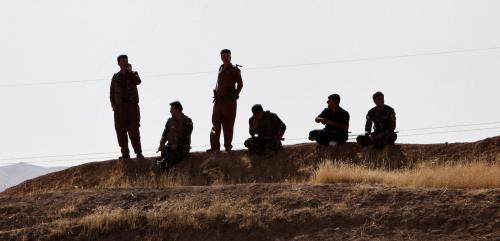
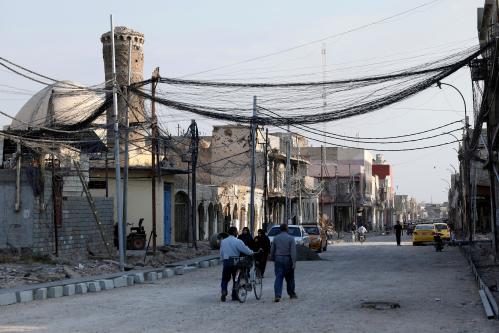

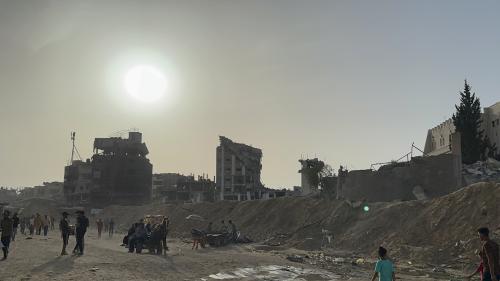
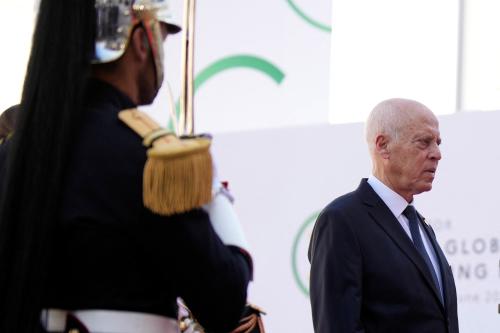
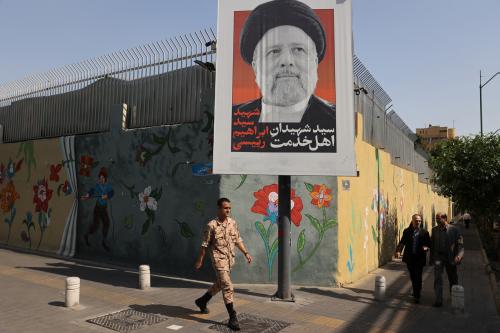
Commentary
Evidence-based keys to a stable, post-caliphate Iraq
July 26, 2017